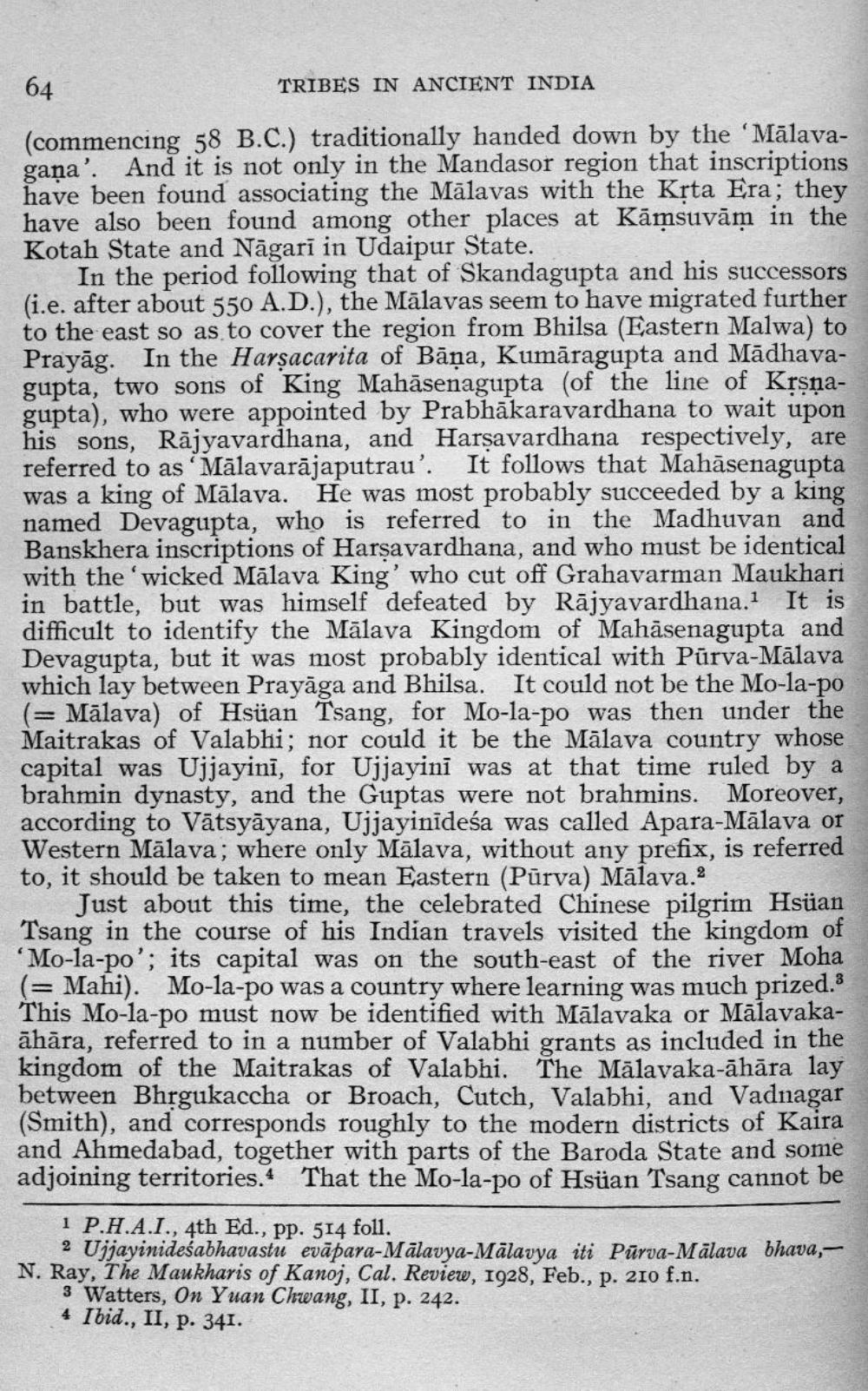________________
64
TRIBES IN ANCIENT INDIA (commencing 58 B.C.) traditionally handed down by the 'Mālavagana'. And it is not only in the Mandasor region that inscriptions have been found associating the Mālavas with the Krta Era; they have also been found among other places at Kāņsuvām in the Kotah State and Nāgarī in Udaipur State.
In the period following that of Skandagupta and his successors (i.e. after about 550 A.D.), the Mālavas seem to have migrated further to the east so as to cover the region from Bhilsa (Eastern Malwa) to Prayāg. In the Harşacarita of Bāņa, Kumāragupta and Madhavagupta, two sons of King Mahāsenagupta (of the line of Krsnagupta), who were appointed by Prabhākaravardhana to wait upon his sons, Rājyavardhana, and Harşavardhana respectively, are referred to as Mālavarājaputrau'. It follows that Mahāsenagupta was a king of Mālava. He was most probably succeeded by a king named Devagupta, who is referred to in the Madhuvan and Banskhera inscriptions of Harsavardhana, and who must be identical with the 'wicked Mālava King' who cut off Grahavarman Maukhari in battle, but was himself defeated by Rājyavardhana. It is difficult to identify the Mālava Kingdom of Mahāsenagupta and Devagupta, but it was most probably identical with Pūrva-Mālava which lay between Prayāga and Bhilsa. It could not be the Mo-la-po (= Mālava) of Hsüan Tsang, for Mo-la-po was then under the Maitrakas of Valabhi; nor could it be the Mālava country whose capital was Ujjayinī, for Ujjayini was at that time ruled by a brahmin dynasty, and the Guptas were not brahmins. Moreover, according to Vātsyāyana, Ujjayinideśa was called Apara-Mālava or Western Mālava; where only Mālava, without any prefix, is referred to, it should be taken to mean Eastern (Pūrva) Mālava.?
Just about this time, the celebrated Chinese pilgrim Hsüan Tsang in the course of his Indian travels visited the kingdom of Mo-la-po'; its capital was on the south-east of the river Moha (= Mahi). Mo-la-po was a country where learning was much prized. This Mo-la-po must now be identified with Mālavaka or Mālavakaāhāra, referred to in a number of Valabhi grants as included in the kingdom of the Maitrakas of Valabhi. The Mālavaka-āhāra lay between Bhrgukaccha or Broach, Cutch, Valabhi, and Vadnagar (Smith), and corresponds roughly to the modern districts of Kaira and Ahmedabad, together with parts of the Baroda State and some adjoining territories. That the Mo-la-po of Hsüan Tsang cannot be
1 P.H.A.I., 4th Ed., pp. 514 foll.
2 Ujjayinideśabhavastu evāpara-Mālavya-Mālavya iti Pūrva-Mālava bhava, N. Ray, The Maukharis of Kanoj, Cal. Review, 1928, Feb., p. 210 f.n.
3 Watters, On Yuan Chwang, II, p. 242. 4 Ibid., II, p. 341.




